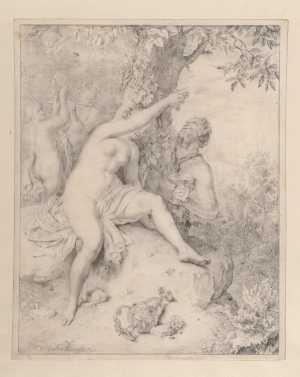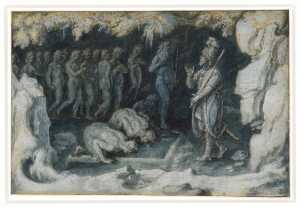Specifications
| Title | Study After a Roman Sculpture of Apollo |
|---|---|
| Material and technique | Black chalk, pen and brown ink |
| Object type |
Drawing
> Two-dimensional object
> Art object
|
| Location | This object is in storage |
| Dimensions |
Height 259 mm Width 179 mm |
|---|---|
| Artists |
Circle of:
Marcantonio Raimondi
Draughtsman: Anoniem |
| Accession number | I 249 recto (PK) |
| Credits | Loan Stichting Museum Boijmans Van Beuningen (former Koenigs collection), 1940 |
| Department | Drawings & Prints |
| Acquisition date | 1940 |
| Creation date | in circa 1500-1550 |
| Watermark | none (vH, 6P, fine paper) |
| Inscriptions | '40' (verso, lower right corner, pencil) |
| Collector | Collector / Franz Koenigs |
| Mark | J.C. von Klinkosch (L.577) |
| Provenance | Josef Carl Ritter von Klinkosch (1822-1888, L.577), Vienna; his sale, Vienna (Wawra) 15.04.1889, (?) lot 781 (Giulio Romano); - ; Franz W. Koenigs (1881-1941, L.1023a), Haarlem, acquired in 1928 (Italian, early 16th century); D.G. van Beuningen (1877-1955), Rotterdam, acquired with the Koenigs Collection in 1940 and donated to Stichting Museum Boijmans Van Beuningen |
| Research |
Show research Italian Drawings 1400-1600 |
| Material | |
| Object | |
| Place of manufacture | Rome > Italy > Southern Europe > Europe |
| Geographical origin | Italy > Southern Europe > Europe |
Do you have corrections or additional information about this work? Please, send us a message
























